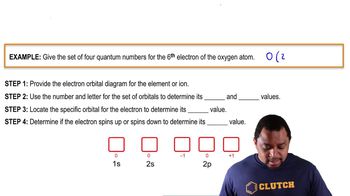Here are the essential concepts you must grasp in order to answer the question correctly.
Molecular Orbital Theory (MO Theory)
Molecular Orbital Theory describes the behavior of electrons in molecules, where atomic orbitals combine to form molecular orbitals that can be occupied by electrons. This theory helps predict molecular properties, including bond order, which is the difference between the number of bonding and antibonding electrons. A higher bond order typically indicates a stronger bond and shorter bond length.
Recommended video:
Bond Order
Bond order is a measure of the number of chemical bonds between a pair of atoms. It is calculated as the difference between the number of bonding electrons and the number of antibonding electrons, divided by two. In general, a higher bond order correlates with a shorter bond length and greater bond strength, making it a critical factor in determining molecular stability.
Recommended video:
Electron Configuration of O<sub>2</sub>, O<sub>2</sub><sup>-</sup>, and O<sub>2</sub><sup>2-</sup>
The electron configurations of O2, O2-, and O2^2- differ due to the addition of electrons in the case of the anions. O2 has a bond order of 2, while O2- has a bond order of 1.5, and O2^2- has a bond order of 1. As bond order decreases, bond length increases, meaning O2 has the shortest bond length among these species due to its higher bond order.
Recommended video:
Quantum Numbers and Electron Configuration Example





